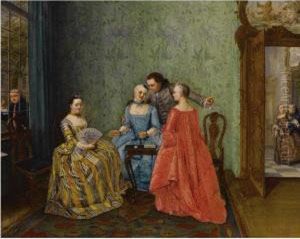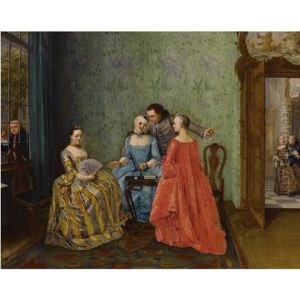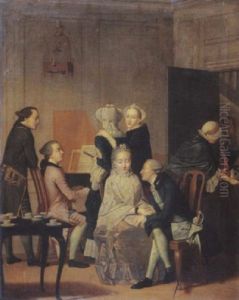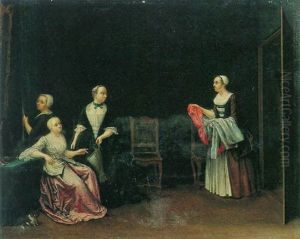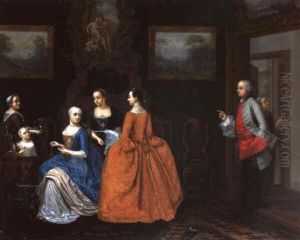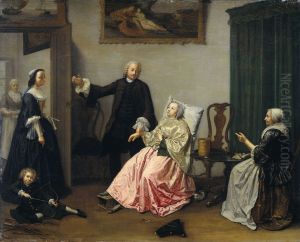Elisabeth Geertruida Wassenbergh Paintings
Elisabeth Geertruida Wassenbergh, often recognized as an important figure among 18th-century Dutch artists, was born on November 25, 1729, in Groningen, Netherlands. She was the daughter of a painter, Jan Abel Wassenbergh, who was her first teacher and significantly influenced her artistic development. Coming from a family with a strong artistic tradition, she quickly adopted the craft and became skilled in her own right, particularly noted for her fine portrait work.
Elisabeth Geertruida's work is characteristic of the Dutch Golden Age's painting style, even though she was born after its peak. She excelled in capturing the likeness and personality of her subjects, often working on commissions for local patrons. Her portraits are distinguished by their attention to detail, subtle use of light, and the rich, warm color palette that was typical of the period.
Despite the challenges faced by women in the arts at the time, Wassenbergh managed to gain recognition and maintain a career as a professional artist—a testament to her talent and determination. Unfortunately, much of her life's details and the breadth of her work have not been extensively documented, which is a common issue with many female artists of the era.
Wassenbergh's works are primarily found in private collections and regional museums, which sometimes limits their visibility to a broader audience. Nevertheless, her contributions to Dutch portraiture and the legacy of her artistic family remain significant. She died on October 15, 1781, in Groningen, leaving behind a body of work that continues to be appreciated by art historians and collectors for its craftsmanship and elegance.
